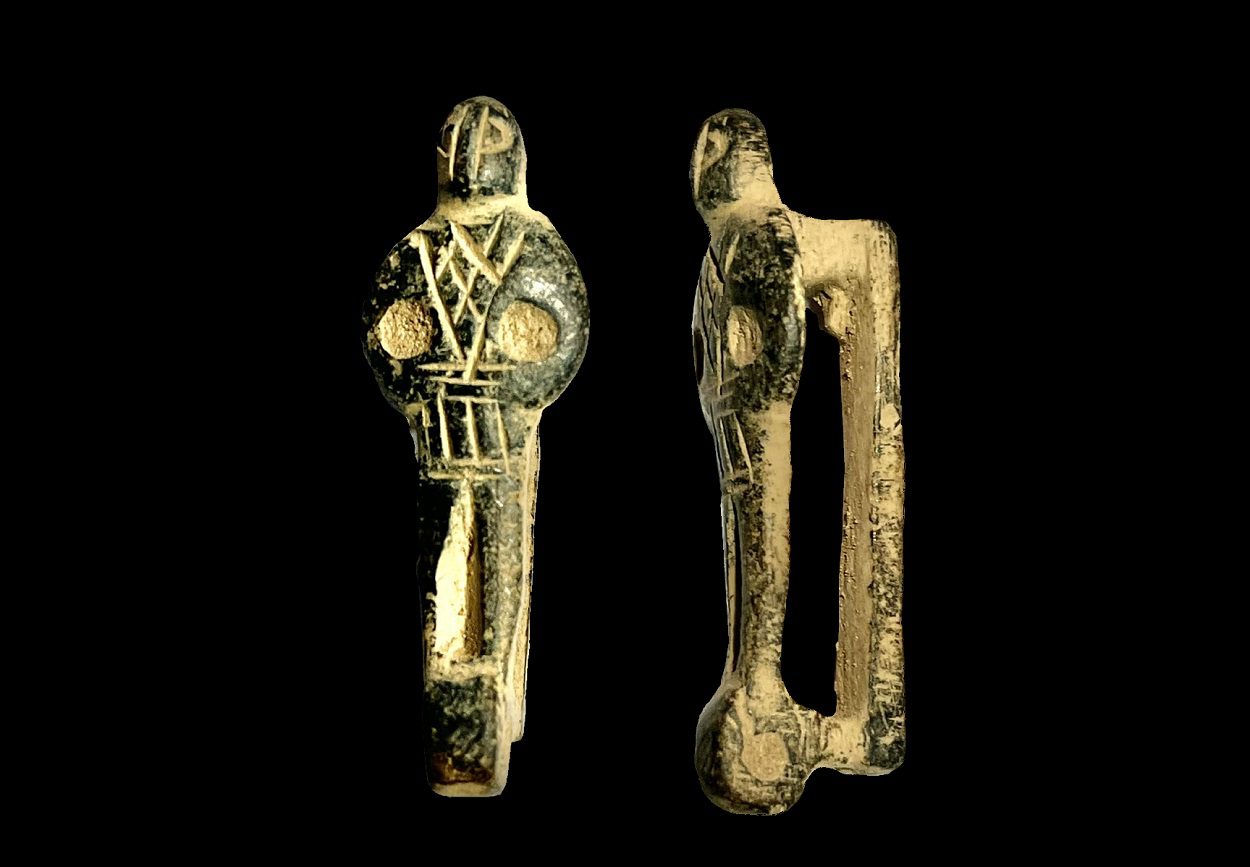An extremely rare medieval belt loop has been found near Kamień Pomorski in Poland’s West Pomeranian Voivodeship.
According to the Museum of the History of the Kamieńska Land, the discovery represents one of only 15 similar belt loops ever found in Europe.
The belt loop was discovered by a detectorist near Kamień Pomorski and measures 56 mm’s in height. The front panel has an anthropomorphic form showing a figure with diagonal and horizontal cuts visible on the torso.
“Only 15 similar belt loops have been discovered in Europe – 1 in Hungary, 1 in Austria and 12 in Germany – most of them were discovered in Bavaria,” said archaeologist Grzegorz Kurka. According to Kurka, a hole below the figure was likely used for hanging keys or a purse.
Anthropomorphic belt loops were typically made by Bavarian craftsmen, specifically those from Nuremberg during the 14th century when the city was a centre for bronze casting in foundries.
Casting involves pouring liquid metal into a mold, which contains a hollow cavity of the desired shape, and then allowing it to cool and solidify. The solidified part is also known as a casting, which is ejected or broken out of the mold to complete the process.
“Our institution’s collection already includes two late medieval belt loops that were discovered in 2017 and 2018. The first one, discovered near Trzebiatów, and the second one discovered in a field near Skarychów (Kamień Pomorski Commune),” adds Kurka.
The belt loop has been donated to the Museum of the History of the Kamieńska Land who described the find as “extraordinary”.
Header Image Credit : Kamień Land History Museum
Sources : Science In Poland (PAP)







